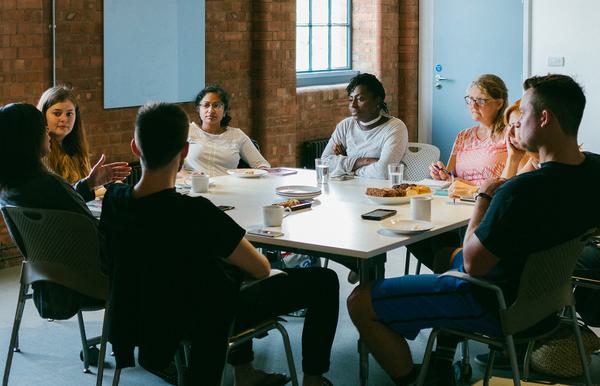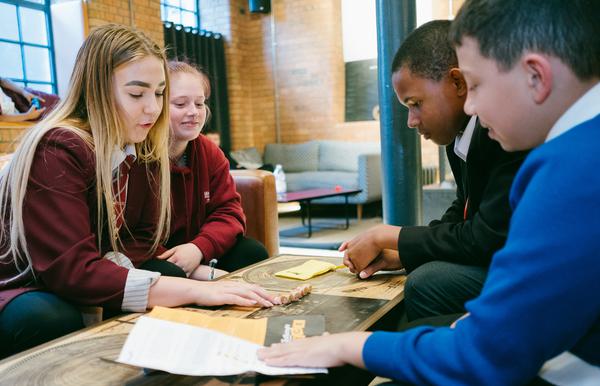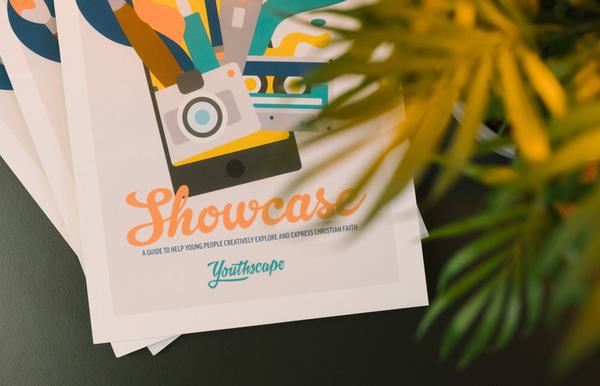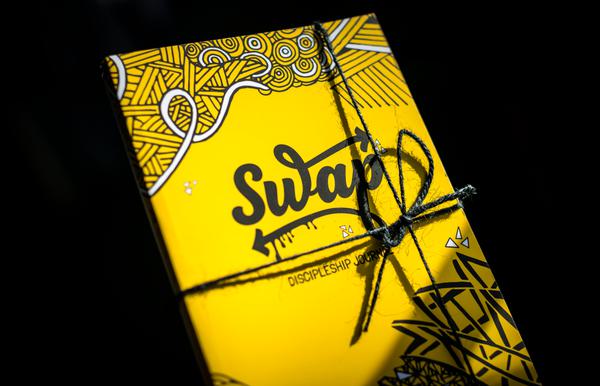Showcase is a new resource that invites young people to explore creativity as a vital expression of faith. Here’s the big picture behind it.
We’ve just launched a new resource—Showcase—that’s designed to serve youth workers, giving them new avenues for exploring life and faith with young people. You can read more about what Showcase is by heading to its product page, but here you can read more about the vision behind it and why we think it matters. There’s three big ideas motivating Showcase.
1. Young people are theologians
If theology is thinking about God, then — on a really simple level — any young person who begins to participate in that activity is a theologian. Beyond that though, they are both a bearer of God’s image, and potentially also his Spirit.
God can speak to them and through them about himself, and the experience of so many youth leaders is that he frequently does. When young people pick up the Bible — the living word of God — they are not somehow immune to the Spirit’s nature and work at that moment; they are taking part in the same divine activity as any adult who might do the same. Kenda Creasy Dean even calls young people “intuitive theologians”: they have a natural aptitude for hearing and understanding God.
2. Young people need opportunities to 'perform' theology
We all need ways to translate our thoughts into some sort of action, and some of us actually only really learn by doing. When young people are given an opportunity to somehow put their faith into practice, it can turn a two-dimensional idea into a reality which works. James Ballantyne writes that “as performing theologians, [young people’s] knowledge of God becomes an action that also forms them as they do it.” Usually we invite them to do this by attending and participating in events, youth groups or church services, but these will only give them limited opportunities to enact and make real the theological ideas that they are carrying.

3. Young people can be Christian leaders
We’re not suggesting that at age 14, with limited knowledge of the Bible and a whole lot of maturing to do, the average young person should be fast-tracked to pastor. But that doesn’t mean that sometimes, they won’t bring insights that are just as good as their pastor’s, and which — if we’ll allow them — couldn’t instruct and form their adult leaders. Two years ago, Youthscape published the first volume of the Swap Bible study resource, which places two people who are usually in a hierarchy — a mentor and mentee — onto a level theological playing field. The feedback we’ve received has been incredibly positive, and the key seems to be this lowering of the divide between ‘leader’ and ‘learner’. Swap recognises that both participants can act as leader during the Bible study, and that both will naturally learn. It’s an idea which we often affirm in youth ministry, but perhaps one which we lack opportunities to put into practice.
At its most basic level, the resource provides you with a wide variety of ideas for helping and motivating young people in creative projects, and for then finding a mechanism to exhibit what they’ve made. If this is all you choose to do with the resource, then it will certainly have been worthwhile. This in itself will have a range of benefits for young people, from contributing to their emotional well-being, to giving them the confidence to show and talk about their work to others. It’ll unearth talents among your young people that you — and perhaps they — never knew were there. And it will add an energy to your youth ‘meetings’, whatever form they take, which comes from the collaboration and democratisation of the creative process. So as you journey through the resource, you’ll see that each activity is explained in such a way that means it can be used with all young people, regardless of any faith context.
However, we’d encourage you to use this resource as a way of engaging young people theologically. By using the activities as a way of thinking and expressing ideas about God, belief and the Bible, you’re potentially offering a host of exciting opportunities to a young person:
- To explore faith in a different, in many cases non-verbal way than they are used to...
- To do this while having fun...
- To see the links between their own creative interests and faith...
- To understand their talents can also be creative gifts...
- To share their ideas AND their talents with others...
- And to contribute to other people’s faith journey through their own learning, thoughts and expression.
Well, that’s the aim. Young people as artists and theologians; youth leaders and youth sharing and engaging with faith in new ways together. We think it’s got potential — what do you think?
This post is adapted from the Introduction of Showcase. You can purchase Showcase here.









